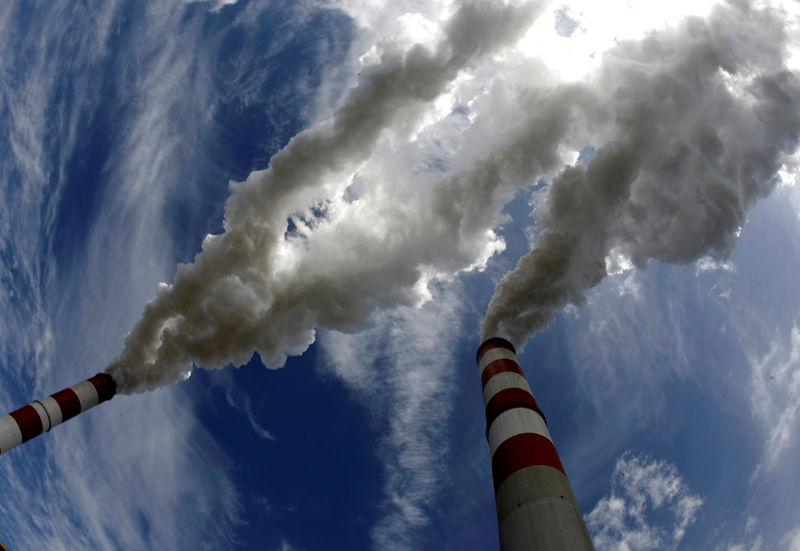By Susanna Twidale
LONDON (Reuters) - Emissions regulated under Europe's carbon market rose for the first time in seven years in 2017 due to stronger industrial output, data published on Tuesday by the European Commission and examined by carbon analysts at Thomson Reuters showed.
Around 45 percent of the European Union's output of greenhouse gases is regulated by the Emissions Trading System (ETS), the bloc's flagship policy to tackle global warming by charging for the right to emit carbon dioxide (CO2).
The ETS is expected to contribute around two thirds of the reductions needed to meet the EU's target of slashing emissions by 20 percent from 1990 levels.
According to the analysts' interpretation of the data, emissions totalled 1.756 billion tonnes of CO2 equivalent (CO2e) last year for companies under the ETS excluding airlines, up 0.3 percent on the previous year.
Capped emissions from power and heating generation fell by 1 percent, but the overall figure was lifted by a 1.8 percent rise in emissions from industry.
"The European economy grew 2.5 percent last year. Solid growth in the European economy resulted in increased activity leading to higher emissions," Ingvild Sorhus, lead carbon analyst at Thomson Reuters, said.
The ETS caps the emissions of around 12,000 power plants, factories and airlines, forcing them to surrender one carbon permit for every tonne of carbon dioxide emitted annually by the end of April of the following year.
The data published on Tuesday accounted for 94 percent of companies covered by the scheme, the analysts said.
The emissions figure is keenly watched by participants in the EU's ETS as it provides a first indication of the supply and demand balance.
The benchmark EU carbon contract
After further reviewing the preliminary data, the analysts forecast emissions from aviation rose 6.1 percent year-on-year in 2017 to 65.2 million tonnes, due to an increase in the number of flights, the analysts said.
With aviation included, total EU ETS emissions were 1.821 billion tonnes, up 0.5 percent year-on-year, the analysts said.

Under the ETS, airlines have to report emissions for all flights that begin and end within the EU.